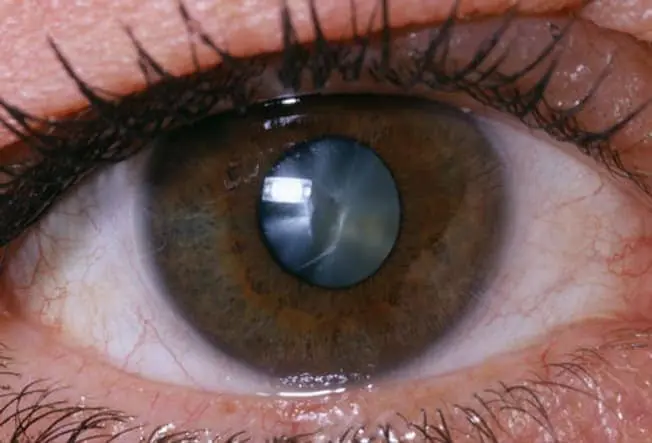A cataract is a clouding of the eye's natural lens. The lens is normally transparent and is located behind the iris. The lens bends light rays so that the image can be formed on the retina. Cataracts are the most common cause of vision loss in people over the age of 40 and the number one cause of blindness in the world. Luckily, with regular eye exams and treatment, they can be slowed and treated with ease.
Cataract symptoms and signs may include:
- Cloudy or blurred vision
- Sensitivity to light and glare
- Difficulty with vision at night or in dimmed lighting
- Fading colors
How are cataracts formed?
Cataracts are formed inside the lens of the eye. As you age the lens becomes less flexible, less transparent, and thicker. The lens is mostly made of water and protein. With age the protein inside the lens may start clumping together and cause small cloudy areas. This is a cataract. Over time the cataract may grow larger clouding more of the lens making it harder to see clearly.

Besides advancing age, cataract risk factors include:
- UV radiation
- Diabetes
- Smoking
- Obesity
- High blood pressure
- Previous eye injury or inflammation
- Previous eye surgery
- Significant alcohol consumption
- Prolonged use of corticosteroid medications
There are different types of cataracts which include nuclear cataracts, cortical cataracts, and posterior subcapsular cataracts.
Nuclear cataracts
Nuclear cataracts affect the center of the lens. At first nuclear cataracts may cause more nearsightedness or even temporarily improvement in your reading vision. Over time the lens turns more densely yellow and causes further clouding in your vision.
Cortical cataracts
Cortical cataracts affect the edges of the lens. It begins as whitish, wedge-shaped streaks on the outer edge of the lens. As it slowly progresses, the streaks extend to the center of the lens interfering with light passing through the center of the lens.
Posterior subcapsular cataracts
Posterior subcapsular cataracts affect the back of the lens. It starts as a small opaque area that forms near to the back of the lens. Posterior subcapsular cataracts often interfere with reading vision, reduces vision in bright light, and causes glaring around lights at night.
Can cataracts be prevented?
Cataracts can not be prevented, although they can be delayed and also treated. It is recommended to have regular eye examinations to help detect cataracts and other eye problems at their earliest stages. The most important factor to delay the formation of cataracts is wearing sunglasses to help protect against UV rays and blue light from the sun. Other strategies that may be helpful is to quit smoking, managing other health problems (ie. diabetes), reducing alcohol use, and to have a healthy diet with lots of fruits and vegetables. Fruits and vegetables have many antioxidants that help maintain the health of your eyes.
If your cataracts are at an advanced stage and are affecting your vision, cataract extraction surgery can be performed. This surgery involves removing part of the cataract material in the crystalline lens in the eye and replacing it with a lens implant. This surgery can be performed by an ophthalmologist, or eye surgeon.
For any questions or if you would like to book an appointment, Dr. Patrick Cheung and the team at York Medical Eye Care can be reached at (905) 836-1112 or info@yorkmedicaleyecare.com.


